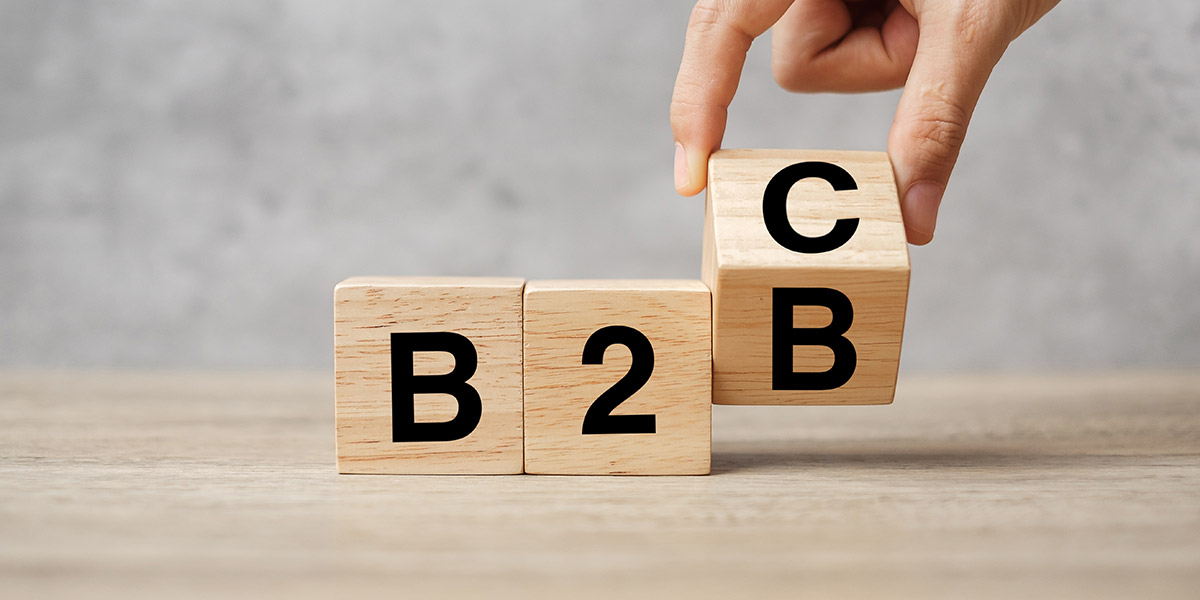The Real Role of B2B Marketing Today
B2B marketing has never been just about tactics and tech stacks. It’s about trust, timing, and helping people make confident decisions.
The role of marketing in B2B organizations has evolved. It’s no longer seen as a support function for sales. Today, marketing is responsible for shaping perception, generating pipeline, influencing retention, and driving revenue. Three key shifts have accelerated that transformation:
- Self-educated buyers: According to Gartner, “75% of B2B buyers prefer a rep‑free sales experience,” showing that buyers want to research and evaluate on their own
- Data and automation: eMarketer reports that 84% of global marketers rely on first‑party data to derive insights, with 67% making data compliance a top priority
- Digital-first expectations: Wistia finds that 82% of viewers watch most of a how-to video under one minute, and YouTube remains the top-performing B2B video channel
This guide breaks down what modern B2B marketing must do to thrive, from strategy through execution, measurement, and future readiness.

The Current State of B2B Marketing
B2B buying is complex, but not random. Today’s B2B marketers must manage both complexity and opportunity. Here are some of the biggest shifts reshaping the landscape:
- Buyer Empowerment: According to LinkedIn’s 2024 B2B Marketing Benchmark Report, 85% of B2B buyers now expect brands to provide content tailored to their specific needs at every stage of the journey.
- Longer Journeys, More Stakeholders: According to Martal Group, on average, buying committees involve 6–10 stakeholders, and those stakeholders rely on peer recommendations, content, and internal alignment, not just sales teams (Martal Group).
- Channel Fragmentation: The average buyer uses six or more channels throughout their journey (McKinsey), yet they expect consistent messaging and UX throughout.
The takeaway? B2B marketing must now function more like B2C in delivery, while retaining the strategic rigor and consultative depth that complex buying requires.
Understand Your Buyer and the New Decision Journey
The buyer’s journey is no longer a straight line. It’s a dynamic, messy, and often unpredictable web of micro-moments. Buyers research independently, interact across multiple touchpoints, and bounce between channels at their own pace.
Choozle CEO Adam Woods states it clearly:
“Gone are the days when the customer journey resembled a neatly organized funnel. Today, people don’t take a linear path to purchase; they zigzag, detour, and hop between platforms, devices, and touchpoints in ways that are anything but predictable.”
Read the full blog: The Customer Journey is Evolving: Are You Keeping Up?
To succeed in this environment, brands must shift from static campaign maps to adaptive omnichannel strategies that flex around the buyer’s path.
To thrive in the modern journey:
- Understand the chaos: B2B buyers still research heavily, 60–70% of the process is self-guided, but the sequence is nonlinear and filled with distractions and restarts.
- Be omnipresent: Use Programmatic Advertising, search, and social to maintain relevant presence across touchpoints.
- Match the moment: Build content and creative for every stage, device, and format so you’re present when and where it matters most.
This approach isn’t about chasing buyers, it’s about meeting them with relevance and timing, powered by data and tech. With omnichannel execution and real-time responsiveness, you can turn fragmentation into an advantage. Want to strengthen your strategy? Check out our Ominchannel Marketing Guide.
Power Your Strategy with First- and Third-Party Data
Data fluency: Marketers today must know how to access, activate, and scale data-driven campaigns. First-party data—like email lists, CRM records, and website visitors—gives you precision, while third-party data expands reach and fills gaps.
- First-party data powers accurate modeling, personalized ads, and lower acquisition costs.
- Third-party partners like Bombora and Dun & Bradstreet offer robust firmographic, technographic, and intent-based segments to target decision-makers at scale.
- Identity resolution platforms like LiveRamp connect offline and online identities for better audience targeting.
The winning strategy blends both, enabling marketers to build high-performing audience segments while maintaining compliance and scale.
Content Strategy: Be Helpful, Not Just Visible
Great content doesn’t just attract attention. It earns trust and builds momentum. Before a buyer speaks to a salesperson, they’re consuming content that helps them understand their problem, evaluate solutions, and compare providers. If your content isn’t answering their questions, someone else’s will.
The most effective B2B content strategies focus on two things: relevance and reusability.
Serve the Buyer, Not the Algorithm
Your content should reflect the real interests, questions, and challenges of your ideal customer profiles and buyer personas. That means:
- Mapping content to specific personas and industries so it resonates with real roles and problems
- Aligning to the buyer journey with clear intent, from education to evaluation to post-sale
Think Library, Not Just Newsfeed
Instead of chasing trends or producing random one-offs, invest in a strategic content library that serves as a durable, on-demand resource. This approach helps your content compound in value over time and supports buyers whenever and however they enter the journey.
You can still layer in timely blogs, thought leadership, or event-driven content as part of a regular publishing cadence. But the foundation should be structured, searchable, and evergreen.
Diversify Your Formats to Maximize Reach
Different buyers prefer different formats. Repurpose and repackage your core content to increase visibility and consumption:
- Long-form: Research reports, whitepapers, eBooks, and case studies provide depth and value
- Short-form: Blogs, curated insights, and executive POVs keep your brand top of mind
- Interactive: ROI calculators, guided demos, quizzes, and planning tools drive engagement
- Multimedia: Podcasts, videos, webinars, and tutorials deliver information in more accessible, human ways
Use Personalization as Your Superpower
Intelligent relevance: Personalized marketing isn’t just for B2C. According to Accenture, 73% of B2B buyers expect the same level of personalization they get as consumers.
It’s no longer enough to speak to companies. You must speak to people. That means:
- Using dynamic creative tailored to a buyer’s industry, job role, or intent
- Retargeting based on content interaction or journey stage
- Offering helpful, timely content, not just promotional materials
Personalization builds trust, accelerates decisions, and creates more meaningful brand engagement.

Align Sales and Marketing (For Real This Time)
In today’s buyer-led landscape, sales and marketing can’t afford to operate in silos. Without a unified approach, prospects encounter disconnected messaging, inconsistent follow-ups, or gaps in their experience.
True alignment creates momentum, improves conversion rates, and strengthens the entire revenue engine.
Here’s how to turn alignment into action:
- Define the funnel together: Establish clear criteria for lead qualification, scoring, and handoff points so both teams stay focused on the right opportunities.
- Coordinate campaign efforts: Ensure outbound sales sequences and marketing campaigns support each other with consistent messaging across touchpoints.
- Share data continuously: Build feedback loops that surface performance insights and buyer behavior to inform next steps on both sides.
When sales and marketing move in sync, you deliver a seamless experience that builds trust and drives results.
Use ABM Thoughtfully, Not Just Tactically
Account-based marketing is more than a buzzword. It’s performance marketing at its most intentional. In a landscape where attention is scarce and buying committees are large, ABM helps you focus effort where it will make the greatest impact.
Done well, ABM means aligning tightly with your sales team and using smart data signals to guide every interaction. It brings precision and relevance to everything from content strategy to campaign execution.
ABM is a coordinated, account-driven approach:
- Align sales and marketing on targets and strategy
- Deliver personalized, multichannel plays
- Use dynamic signals to trigger next steps
Instead of casting a wide net, you’re building meaningful relationships with the right accounts at a faster pace and with greater clarity.
Blend Paid, Owned & Earned Media
Winning in B2B today isn’t just about optimizing one channel; it’s about creating a unified presence across the platforms your buyers trust. When paid, owned, and earned media work together, they reinforce each other to drive trust, engagement, and conversions.
Why this matters
According to WiserNotify, marketers who run omnichannel campaigns across paid, owned, and earned media see a 287% higher purchase rate than single-channel campaigns.
McKinsey reports that companies with strong omnichannel strategies experience 9.5% annual growth, compared to 3.4% for weaker performers.
And Salesforce finds that 71% of consumers expect consistent messaging across channels and devices, highlighting the need for integrated communication.
Maximize buyer impact with:
- Paid media: Targeted ads, retargeting, connected TV (CTV), and social campaigns extend reach and drive high-intent traffic to your owned experiences.
- Owned media: Gated content, email nurtures, product demos, and webinars let you educate and capture leads while controlling the brand narrative.
- Earned media: Media coverage, analyst validation, customer reviews, and influencer collaborations build third-party credibility and amplify reach.
Measure What Matters Most
Vanity metrics don’t pay the bills. In high-stakes B2B environments, marketing’s credibility and budget depend on proving real business impact. That means moving beyond impressions and clicks to track what drives growth.
Outcome orientation: Modern B2B marketing must focus on metrics that reflect business value, including:
- Pipeline contribution and sourced revenue
- Average deal size and sales velocity
- Customer acquisition cost and ROI
- Churn reduction and customer lifetime value
With platforms like Choozle’s Outcomes+, marketers can apply advanced modeling to connect ad spend with real-world business performance.
What’s Next: Future-Proofing Your B2B Marketing Strategy
The next phase of B2B marketing is not about chasing every new tool or trend. It’s about building a future-ready engine—one that is agile, insight-driven, and deeply aligned to the buyer’s needs in real time.
AI-powered strategy: Artificial intelligence is evolving from a content generator to a true strategic partner. Expect more marketers to lean into predictive modeling, generative creative testing, and AI-informed segmentation to guide decisions at scale.
First-party data renaissance: With third-party cookies on the way out and signal loss continuing to rise, first-party data is becoming a critical foundation. Marketers are investing in zero-party strategies, clean rooms, and identity resolution to stay precise without sacrificing compliance.
Omnichannel intelligence: Marketing is no longer about adding channels. It’s about weaving them together. As journeys become more fractured, marketers must build systems for unified planning, measurement, and cross-channel attribution.
Buyer journey reimagined: Linear funnels no longer reflect how buyers move. The future belongs to adaptive journey models that respond to real-time behavior and personalize the next step, whether it’s content, outreach, or retargeting.
Brand as growth engine: Performance will always matter, but differentiation and trust determine who gets in the room. High-growth B2B companies invest in brand identity, emotional storytelling, and customer advocacy to build long-term value.
Final Thoughts
B2B marketing isn’t about chasing trends. It’s about solving real problems in real time—with empathy, intelligence, and accountability.
To be successful today, your strategy must:
- Understand your buyer’s path
- Use data to power precision and scale
- Deliver personalization that drives trust
- Prove value with measurable outcomes
- Adapt quickly to a changing landscape
Whether you’re refining an existing program or building from the ground up, Choozle can help. Explore our platform and services to learn how we partner with B2B marketers to create smarter, more successful campaigns. Explore Choozle’s B2B advertising solutions.





